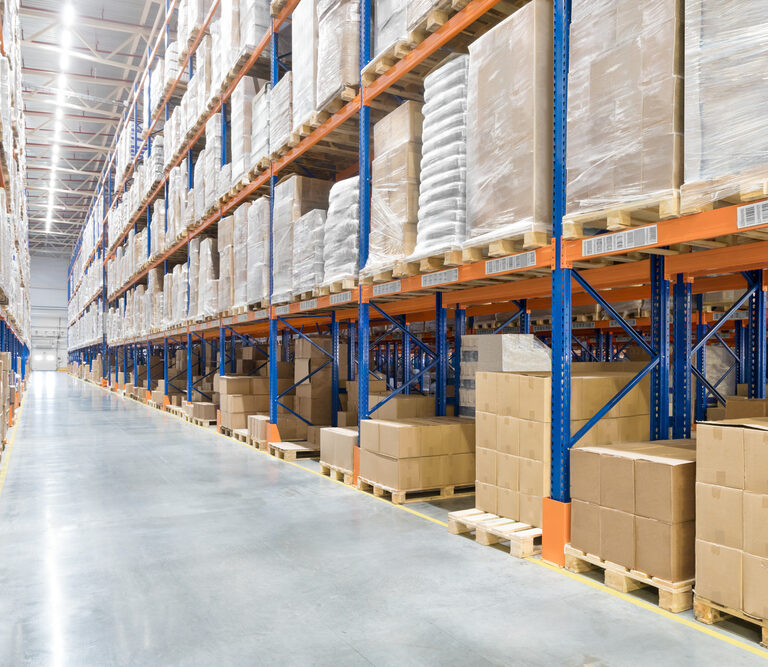Blockchain has gained widespread popularity with volatile cryptocurrencies like Bitcoin. The creators of blockchains, also known as distributed ledger technologies, have claimed to be on the cusp of revolutionizing banking and finance. But how are these technologies impacting the supply chain and logistics industry?
What is Blockchain?
A blockchain is a ledger that is maintained by many database servers instead of one. Parties on the blockchain network can see and submit transactions. Transactions are processed and audited across the network to ensure each one is valid and accurate. Once validated, transactions cannot be changed and are considered immutable. The history of all transactions is accessible to anyone with access to the network.
3 Applications of Blockchain in Supply Chain
Many different companies across a variety of industries have found a use for distributed ledger technologies. Here are just a few examples of how blockchain technologies could impact everyday life:
- Shipping – Maersk announced last year that it would be using a blockchain-based ledger to manage and track the paper trail of its shipments by digitizing their supply chain. The progress of goods can be viewed at any point through the blockchain ledger, as well as data such as customs forms or bills of lading for example.
- Finance – Blockchain technology provides the ability to remove third parties from transactions (meaning fewer fees) and speed up the time required for clearance and settlement because the transactions may be seen in real time. Within the financial services industry, each company maintains its own data on disparate systems; use of blockchain can help standardize that process.
- Healthcare – Distributed ledger technologies could allow for a more collaborative healthcare network. This technology could allow doctors, insurance providers and patients to add to a patient’s healthcare record and create a more free-flowing and easily accessible record. Large databases could also be compiled based on existing physician and patient data and machine learning could be used to identify predictors of poor health.
Blockchain in the Supply Chain
The transparency and immutability of transactions on the blockchain are key components for enhancing the supply chain industry. Visibility across a supply chain, from supplier through manufacturing, distribution to retail, is possible through blockchain. Tracking documents through the supply chain is simplified through the blockchain – the need for extra copies of bills of lading, import/export documents, and other certifications is eliminated.
In our experience, a non-negligible number of freight invoices contain errors. Errors in critical documents can result in postponed unloading times, which in food industries can be the difference between fresh produce and tons of wasted food. Tracing the authenticity of a product is a key driver of value in a market.
As another example, counterfeit goods can threaten the brand image of luxury goods or cause health crises for adulterated foods and drugs. According to the Organization for Economic Co-operation and Development, counterfeit goods account for over $450 billion in trade annually. Several blockchain projects are specifically targeting this issue and aim to bring transparency to global supply chains.

Increase ROI Through Successful Warehouse Slotting
A well-thought-out slotting strategy also enables businesses to minimize wasted space and maximize storage capacity within the warehouse. Increase ROI using the right tools, strategy and management plan with successful warehouse slotting.
Case Study: IBM Blockchain Partnerships
IBM has spearheaded blockchain projects in the supply chain industry, and its most notable partnerships are with Walmart and Maersk.
Walmart is addressing issues of food safety while tightening control over its supply chain. It’s blockchain initiative to trace food products includes partnerships with Dole, Driscoll’s, Golden State Foods, Kroger, McCormick and Company, McLane Company, Nestlé, Tyson Foods, and Unilever. In Walmart’s trial they were tasked to trace a package of mangos back to its original source using current methods and then using their blockchain application.
The original methodology, which involves manually collecting paperwork through the various stages of the supply chain, was able to find the source of the mangos in just under seven days. Their blockchain application completed the task in 2.2 seconds. The blockchain trial was not only successful in demonstrating food safety and compliance, but also to improve on its operations.
During the mango test, they discovered a three-day delay in the transit between facilities. Understanding where these delays occur helps Walmart streamline its supply chain and to provide the freshest quality product for the customer. Walmart plans on expanding the program in the US and China as an effort to increase food safety, improve traceability and streamline its supply chain.
Maersk’s partnership with IBM is testing a blockchain solution powered by Hyperledger, to digitize and simplify the enormous amounts of paperwork that is associated with international freight shipping. There are significant costs associated with this paperwork – the World Economic Forum estimates the cost of process trade documents can cost up to 20 percent of the shipping costs.
Creating a comprehensive digital system, like the Hyperledger blockchain, is a $250 billion in cost saving opportunity as estimated by the United Nations. Access to shipping information and documents across the supply chain not only provides increased visibility, but also new ways to do business.
Smart contracts are an embedded feature of many blockchains and can automatically trigger payments once certain conditions are met. Smart contracts can be used for a variety of purposes, depending on the data that is inputted into the system. For example, payments or other assets on the blockchain can be distributed in part or in full, over any period of time or other combination of data.
7 Barriers to Blockchain Adoption
While blockchain adoption is increasing, there’s still a long way to go before it becomes standard – if it ever gets there. There are a wide variety of factors that play into people holding off on blockchain technology:
- No universal use case. Blockchain can be applied to just about anything, which means no two organizations or people will use it the same way. Executives and consumers are unlikely to find an example and say “That’s exactly what I need to do, in a way that makes sense for me to do it.”
- Too complicated. Right now the process is simply too complicated for the average person to want to deal with following the appropriate steps.
- Not fast enough. Simply, the speed of transactions cannot compete with what is currently offered.
- Regulation slowing down innovation.
- Lack of trust. Cryptocurrencies have gotten plenty of bad press over the last year or so, and fair or not, people will be slow to adopt because of that.
- No sense of urgency/need. As a rule, most people will refuse to adopt new changes until they risk falling out of the majority. For a change as radical as using blockchain technologies, that could slow down the process substantially.
- Permanency. Because the nature of blockchains is that each one builds off the last, it is impossible to go back and make changes without impacting the blockchain as a whole. This makes the cost of mistakes very high.
Conclusion: The Future of Blockchain
The Gartner 2018 CIO Survey shows that while two-thirds of CIOs have some interest in blockchain, only 1% have implemented, or invested in, blockchain, and 22% are in the short-/medium-term planning or experimenting with stage. (Gartner, Blockchain-Based Transformation: A Gartner Trend Insight Report, Rajesh Kandaswamy and David Furlonger, March 27, 2018)
As blockchain technologies continue to be adopted, they will have a greater and greater impact on the supply chain industry. We’ll make sure you stay updated on what this emerging trend can mean for your business.
Ready to improve efficiency and supply chain transparency? Let’s have a conversation!






